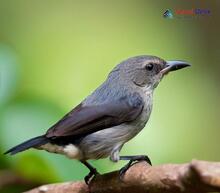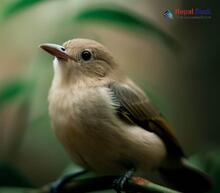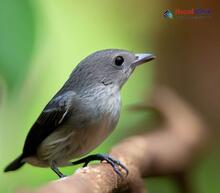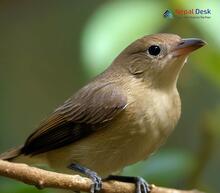The diverse world of birds boasts an array of fascinating species, each with its unique characteristics and adaptations. Among these captivating creatures lies the Dicaeum genus – a group of species that have enthralled bird enthusiasts worldwide. Let's delve into the evolutionary tree of the Dicaeum genus, unravel its taxonomy and morphology, and uncover its diverse presence in Nepal.
Evolution and Taxonomy
The Dicaeum genus belongs to the family Dicaeidae, which also includes the closely related Prionochilus genus. These small passerine birds primarily inhabit the forests within South and Southeast Asia, including the vast landscapes of Nepal. The diversification and evolution process of this genus has given rise to over 40 unique species that differ in size, coloration, habitat preferences, and feeding habits.
Morphology
Birds within the Dicaeum genus are predominantly small in size, with some species showing distinct sexual dimorphism (physical differences between males and females). They possess short bills specially adapted for gleaning insects or feeding on nectar. Furthermore, they exhibit vibrant colors that render them visually striking – from subdued grays and browns to eye-catching reds and yellows.
Their wing structure allows them agile flight patterns, essential for navigating through dense vegetation. Additionally, their legs are built for perching or grasping onto plant stems while sipping from flowers or snatching insects from the foliage.
Presence in Nepal: Species Overview
Nepal serves as a natural haven for several species within the Dicaeum genus. The country's varied habitats provide suitable environments for these avian wonders to flourish. Among the captivating species found in Nepal are the following:
1. Fire-breasted Flowerpecker (Dicaeum ignipectus) - Sporting a vibrant red breast patch, this flowerpecker is a sight to behold. They can be spotted in subtropical and temperate forests throughout Nepal.
2. Thick-billed Flowerpecker (Dicaeum agile) - With a stout bill perfect for feeding on berries, this species inhabits the Himalayan foothills' broad-leaved forests in the country.
3. Yellow-vented Flowerpecker (Dicaeum chrysorrheum) - This species showcases stunning yellow plumage on its rump and white markings on its wings. They predominantly reside in deciduous woodlands and scrub areas within Nepal's lower elevations.
4. Scarlet-backed Flowerpecker (Dicaeum cruentatum) - Boasting an awe-inspiring crimson-colored back, this species prefers open woodland habitats in Nepal's southern lowlands.
In summary, the Dicaeum genus is a phenomenally diverse group of birds representing the immense biodiversity present in South and Southeast Asia. With striking morphological adaptations and varied presence in Nepal – from lowland forests to towering mountain ranges – these species hold an essential place within the ecosystem and continue to captivate avid birdwatchers worldwide.




